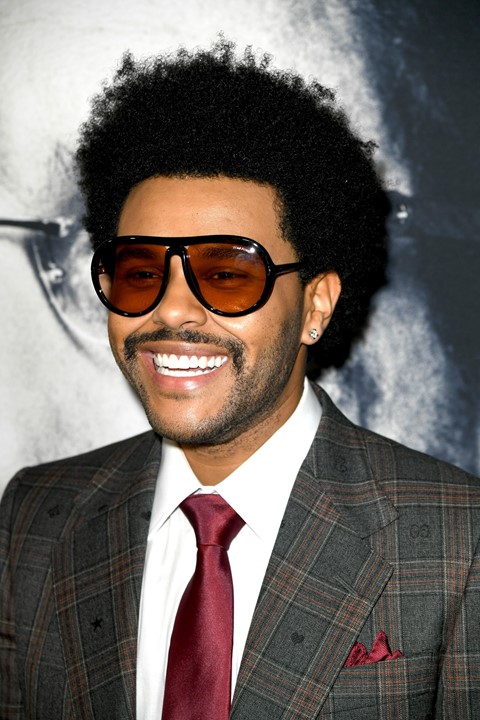Veneers are running rampant through Hollywood, as celebrities trade their natural smiles for something a bit more uncanny. Amid the one-size-fits-all look, we celebrate the beauty of imperfect, slightly wonky teeth
Have any of your favourite celebrities started to look a bit uncanny lately? As if something is different about their face, but you can’t quite put your finger on it. Or maybe you can easily put your finger on it: their natural, slightly wonky teeth have transformed into identical, perfectly even, perfectly white, possibly slightly too big for their mouth gnashers. From K-pop idols to Hollywood A-listers, dental veneers are becoming increasingly prevalent among the rich and famous.
However, not everyone is so keen on the one-size-fits-all, bright white perfectly straight teeth. Many people have taken to social media in the past few months to argue that veneers take away from the personality of your face and can completely change your appearance. Aram (@aramnotagoat), whose tweet calling for an end to the “epidemic of horse teeth veneers” went viral, tells Dazed that veneers take away from the charm of natural teeth, and that they just end up looking “big and goofy”. Not to mention the fact that they can negatively affect how we view our own smiles. “I was probably 12 when Disney made Demi Lovato close her gap with veneers, basically telling a generation of children that these natural variations in teeth are undesirable, even if your favourite stars have them,” he says.
First invented in 1928, veneers were developed in Hollywood as a way to change an actor’s appearance for a film shoot. However, it wasn’t until the early 80s that they really started to gain popularity. Getting veneers involves shaving down the enamel of your teeth and then having shells installed to cover the surface. It’s a permanent procedure, and once patients receive them they are unable to switch back to their natural teeth. Improving the overall appearance (discolouration, cracks, gaps etc) is by far the main appeal, but cosmetic dentist Dr Sam Jethwa says that they can also be used for non-cosmetic reasons, like to strengthen weakened or chipped teeth. While the “perfect” smile may seem quicker and more attainable with veneers than braces, porcelain veneers will still run you between £500 to £1,000 per tooth in the UK.
More than one in ten people (14 per cent) in the UK said in a Chelsea and Fulham Dentist survey that they would pay for veneers if they could afford it. “The increasing emphasis on dental aesthetics in media and social platforms has led to heightened awareness and demand for cosmetic dentistry procedures, with veneers standing out as a main choice,” veneer specialist Dr Stephen Dodd tells Dazed.
When veneers are done poorly, however, Dr Jethwa warns that they can negatively affect the health of your teeth, as well as the look. “Veneers can look unnatural when they are too large for a person’s face, are a bright white pantone, or are incredibly thick and have almost no gaps in between the teeth,” he says. Teeth are a big part of someone’s appearance. So when they look fake or unnatural, it can cause a feeling of unease or that something isn’t quite right, even if you can’t pinpoint what it is. “Why do celebrities get their veneers so straight across and so white… it looks so uncanny valley,” as one Twitter user said. Comments of “uncanny valley” also filled the videos of Chloe Cherry, who had fake veneers put in as part of a Halloween costume.
@anniesright What are y’all’s thoughts on #veneers ♬ original sound - annie
The term “Uncanny Valley” was coined by Masahiro Mori in the 1970s; it’s described as the feeling of unease that comes in response to robots that appear overly human-like. While celebrities with bright white veneers aren’t robots, they can bring about a similar feeling of apprehension. “Smiles form part of the overall message given by the face and are highly important in our reaction to someone we encounter,” says cognitive psychologist Stephanie Lay. “One aspect of face perception is that we don’t process them ‘piece by piece’ but rather as a whole entity all at once. For us to find a face trustworthy, there needs to be a consistent match between all of the elements that make up the face – if one part is out of [place] with the rest, then we find the face unsettling and uncanny.”
The way that we interpret faces is heavily reliant on how features look in combination. This is part of the reason why veneers on otherwise “normal” looking celebrities are so alarming. On the other hand, when celebrities sport their natural smiles they give the opposite effect. “Imperfect, crooked or gapped teeth can make someone seem more natural and human,” says psychologist Alyssa Roberts. “Perfection tends to look manufactured. Those little quirks and flaws make people seem authentic.” Since the recent oversaturation of veneers in Hollywood, many fans have begun praising celebrities like Ethan Hawke, Kristen Dunst, Barbara Palvin and Lewis Hamilton who still have their original imperfect teeth.
Professor Nicholas Rule, vice-principal academic and dean of the University of Toronto Mississauga, studies the psychology of faces and agrees that teeth play a big role in how we perceive others. One of his studies finds that the attractiveness of one’s smile contributes to how happy we perceive them as. “Our hypothesis was that people with unattractive smiles might look happier when they smile because it might take more for them to overcome embarrassment about their smile in order to display it to people,” he says. “What we actually found, however, was that people with attractive smiles were perceived as happier, which we attribute to what’s called the ‘attractiveness halo effect’ in psychology: the phenomenon in which better-looking people are perceived as universally better on all things.”
saw the tweet about his veneers and had to see for myself….. i feel sick to my stomach i do. What are we doing to our beautiful kings pic.twitter.com/zktKg1lHFS
— Grace (@gracecamille_) December 10, 2023
So although critics claim that veneers look bad, Rule challenges this by saying that we often associate people who are wealthy enough to receive these procedures as attractive, even if subconsciously. “More attractive people look more successful and, indeed, end up earning significantly more over the course of their lifetimes. To the extent that veneers improve appearance, this could certainly contribute. Moreover, detecting that someone has a veneer on their teeth might also lead to an attribution that they’re wealthier because it shows that they can afford them,” he says. Veneers, then, can serve as a status symbol and a marker for wealth and perceived success.
In our current culture where all unique quirks and “flaws” in our appearance need to be flattened and erased into one generic, bland look, it can feel hard to have little “imperfections” and distinguishing features. But faces should be different and interesting. It is our unique aspects that make us who we are, and anything that gives our faces character and charm – including slightly wonky teeth – should be nothing but celebrated.




